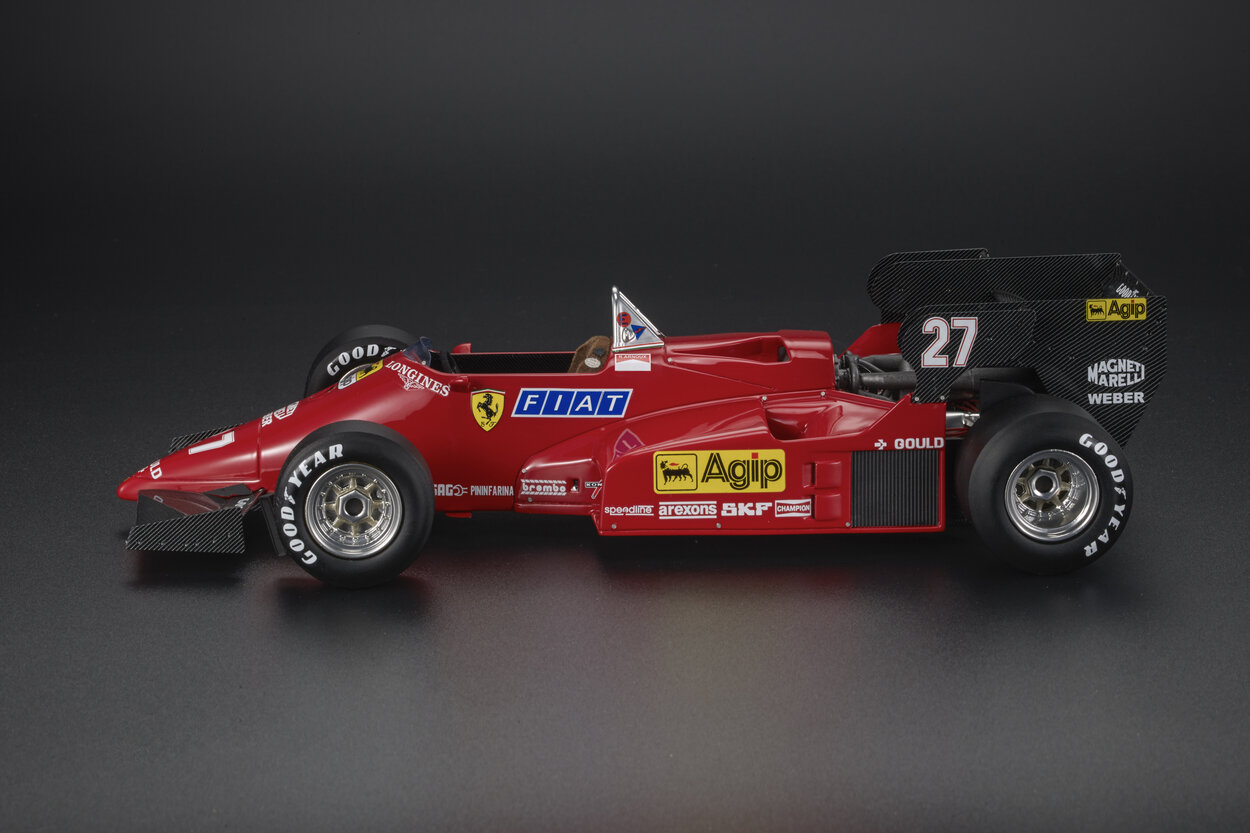Ferrari 126 C4M
Like the immediately preceding models, the 126 C4 is designed by the duo Mauro Forghieri-Harvey Postlethwaite. Although the success of the car might suggest otherwise, the cohabitation between the two engineers was never easy and leads, precisely in this season, to Mauro’s resignation.
The 126 C4 is the latest evolution of the cars in the C series, which began with the 126C in 1980, although it did not participate in any Formula 1 World Championship races, but was the first to develop a turbocharged engine. The starting point for the C4 is the previous model, the C3, which debuted in the middle of the previous season and was quickly retired despite achieving two victories, three pole positions, and two fastest laps in just seven Grand Prix races.

Drivers:
Michele Alboreto: With Tambay’s departure, it’s the Milanese driver Michele Alboreto who inherits the Ferrari with the number 27 that had belonged to Gilles. Michele is the first Italian Enzo Ferrari hires for Ferrari since the early 1970s and will be the last. He arrives after a year of waiting – a handshake with the Grand Old Man, but a contract in force with Tyrrell, which he intends to honor. The first victory – the only one of the season – comes early. Michele climbs to the top step of the podium already at the third race of the year, the Belgian Grand Prix at Zolder, which alternated with Spa at the time. This is followed by two second places at Monza and the new Nürburgring and a third place at Zeltweg. Pole position in Belgium.
René Arnoux: No victories, but two second places at Imola and Dallas, and two third places at Zolder and Monaco under the downpour that heralds the Senna era. This is the meagre haul for Arnoux in his last full season with Scuderia Ferrari.
Our model cars:

Postlethwaite works extensively on the aerodynamics of the car, moving the cockpit even further forward and completely redesigning the side pods, which are now shorter, lower, and even more inclined. As in the model that follows, the upper fairing is very low, partially exposing the 120° turbocharged 6-cylinder engine and is cut by a large NACA air intake on each side. The gearbox is also new, completely redesigned and placed in a transverse position. The fuel tanks are more capacious.
The 126 C4 is the car that sees the return to Ferrari’s driver’s seat, and to victory, of the first Italian driver since the days of Arturo Merzario, eleven years earlier. Despite seven podium finishes, it wins only one of the sixteen races it contests. Its accolades include one pole position and three fastest race laps. It is the runner-up in the Constructors’ World Championship in 1984.

